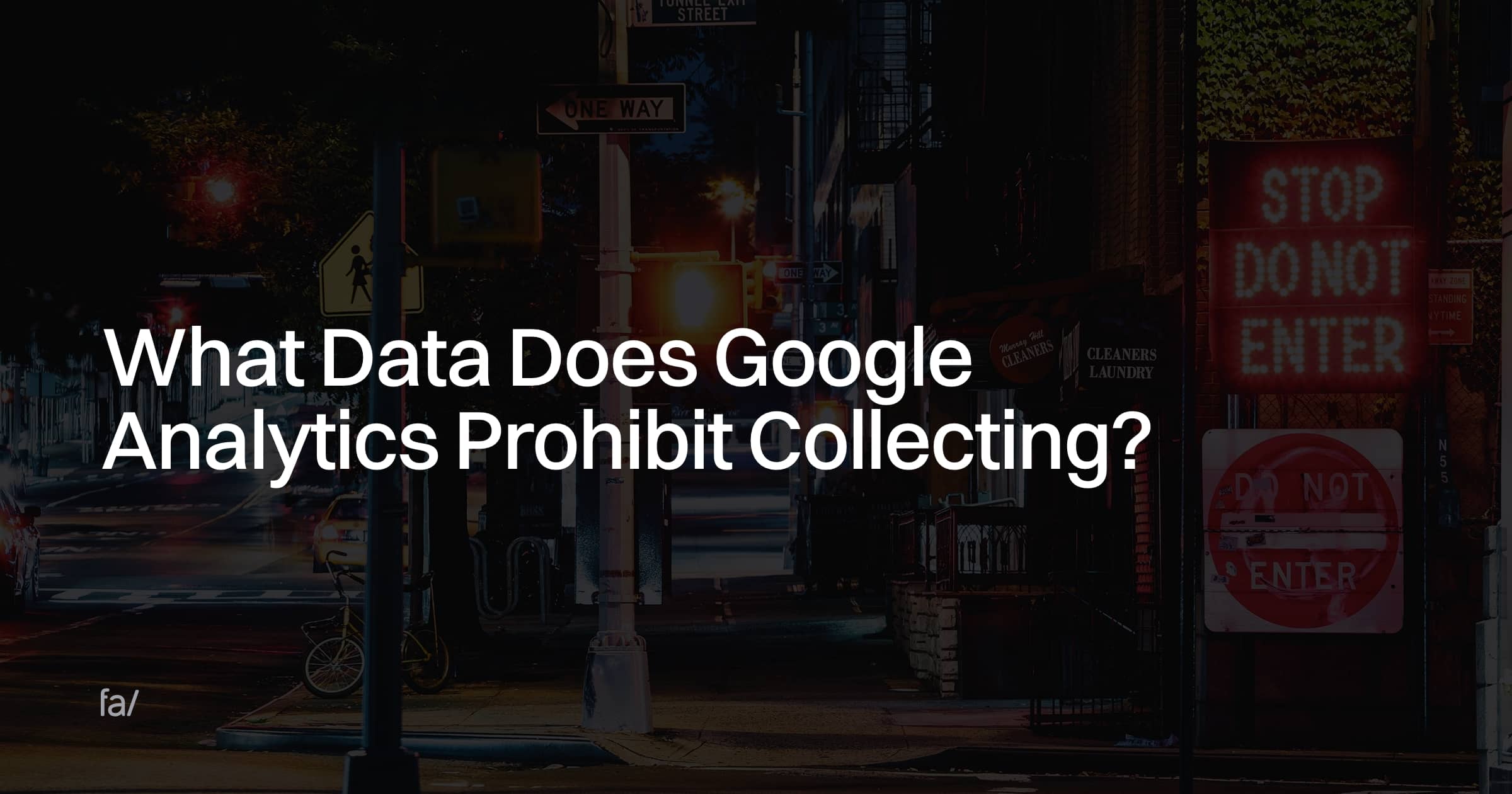Unlocking Insights: Recognizing What Data Does Google Analytics Prohibit Collecting
Unlocking Insights: Recognizing What Data Does Google Analytics Prohibit Collecting
Blog Article
Browsing the Intricacies of Information Collection Limitations in Google Analytics: What You Required to Know
In the world of digital analytics, Google Analytics stands as a foundation device for organizations to amass insights into their on the internet efficiency. Nonetheless, under its seemingly straightforward interface lie complexities that can impact the accuracy and reliability of the data it provides. Recognizing the details of information collection limitations in Google Analytics is critical for making informed decisions based upon the insights stemmed from the system. As services aim to leverage information for critical development and performance optimization, knowing these limitations comes to be not simply valuable yet vital.
Data Disparities in Google Analytics
Sometimes, data disparities may arise in Google Analytics, demanding a detailed understanding of the platform's intricacies to successfully attend to and correct these disparities. These inconsistencies can originate from different resources, such as execution issues, information sampling, filters, or also crawler website traffic. One common factor for data incongruities is discrepancies in between data collected through JavaScript monitoring code and data imported from various other sources like Google Ads or Look Console.
To deal with these disparities, it is essential to initial conduct a detailed audit of your monitoring setup. Confirm that the monitoring code is correctly carried out on all web pages, check for any type of filters that may be altering the information, and make sure that there are no redirects or other technological issues conflicting with information collection. Additionally, familiarize yourself with typical risks, such as cross-domain tracking mistakes or misconfigured objectives.
Monitoring Challenges and Solutions
Provided the complexities of information disparities that can occur in Google Analytics, attending to monitoring challenges and carrying out reliable remedies becomes vital for making certain trusted and precise information analysis. One common monitoring challenge is accurately tracking cross-device and cross-platform user interactions. Users today engage with websites and applications throughout numerous tools and systems, making it testing to associate activities to a single user accurately. To conquer this, implementing customer ID monitoring can aid attach interactions across various devices under one user identifier, providing an extra all natural sight of individual habits.
One more monitoring challenge stems from advertisement blockers and privacy laws, which can prevent the collection of precise information (What Data Does Google Analytics Prohibit Collecting?). Solutions to this include executing server-side tracking, which bypasses client-side restrictions, and valuing customer personal privacy preferences by giving clear opt-in systems for information collection

Understanding Experiencing in Reports
Testing in reports offers a technique for examining big datasets efficiently while maintaining analytical significance. In Google Analytics, tasting takes place when the volume of information queried exceeds a certain limit, leading to the system examining just a section of the information to supply insights. While tasting can accelerate report generation and minimize handling demands, it is vital to recognize its implications on the accuracy and integrity of the outcomes.
When managing tested information, it's necessary to consider the potential margin of error that might develop as a result of examining just a subset of the full dataset. The accuracy of the insights derived from tasted records may differ, and individuals need to interpret the findings with caution, particularly when making data-driven choices based on these reports.
To find more information navigate sampling in get more Google Analytics efficiently, individuals can explore choices such as readjusting the sampling degree, using customized report setups, or leveraging Google Analytics 360 for higher information restrictions and more accurate coverage capacities. By recognizing the nuances of sampling in records, users can make enlightened decisions and draw trustworthy verdicts from their data evaluation efforts.
Impact of Cookie Removal on Information

In addition, cookie removal can alter market and interest information, as Google Analytics counts on cookies to categorize users based upon their surfing patterns. Without this info, online marketers might battle to develop targeted campaigns that reverberate with their target market. To mitigate the influence of cookie deletion, organizations can motivate individuals to opt-in for data tracking, make use of various other monitoring techniques like user IDs, and consistently monitor information inconsistencies to make sure data integrity in Google Analytics.
Enhancing Information Accuracy With Filters
To improve the precision and reliability of data in Google Analytics, implementing filters is a critical approach for improving data accuracy. Filters allow users to look through and fine-tune the data collected, making sure that only appropriate and accurate details is consisted of in the evaluation. By establishing filters, customers can leave out inner traffic, spam recommendations, or any various other pointless information that could skew the outcomes. This process assists in providing an extra accurate depiction of customer behavior on a web site, causing better-informed decision-making.
Filters not just aid in leaving out unwanted information however additionally enable for the customization of sights to concentrate on specific segments or patterns of user communications. In verdict, utilizing filters in Google Analytics is necessary for enhancing information precision and making sure that informed decisions are made based on trusted information.
Verdict
Finally, browsing the intricacies of information collection constraints in Google Analytics calls for a deep understanding of information inconsistencies, tracking difficulties, tasting in reports, the effect of cookie removal, and the usage of filters to boost information accuracy. By addressing these difficulties and using proper solutions, read what he said companies can make sure the dependability and precision of their data analysis for educated decision-making.
One common reason for information disparities is inconsistencies between data accumulated using JavaScript tracking code and information imported from various other resources like Google Advertisements or Search Console. What Data Does Google Analytics Prohibit Collecting?.
Provided the complexities of information discrepancies that can emerge in Google Analytics, addressing tracking challenges and implementing effective solutions ends up being vital for ensuring reliable and accurate data analysis. In Google Analytics, tasting happens when the quantity of data quized surpasses a specific threshold, leading to the system analyzing just a part of the information to give understandings. To reduce the impact of cookie deletion, companies can motivate users to opt-in for information monitoring, make use of other tracking approaches like user IDs, and frequently keep an eye on information inconsistencies to make certain information honesty in Google Analytics.

Report this page